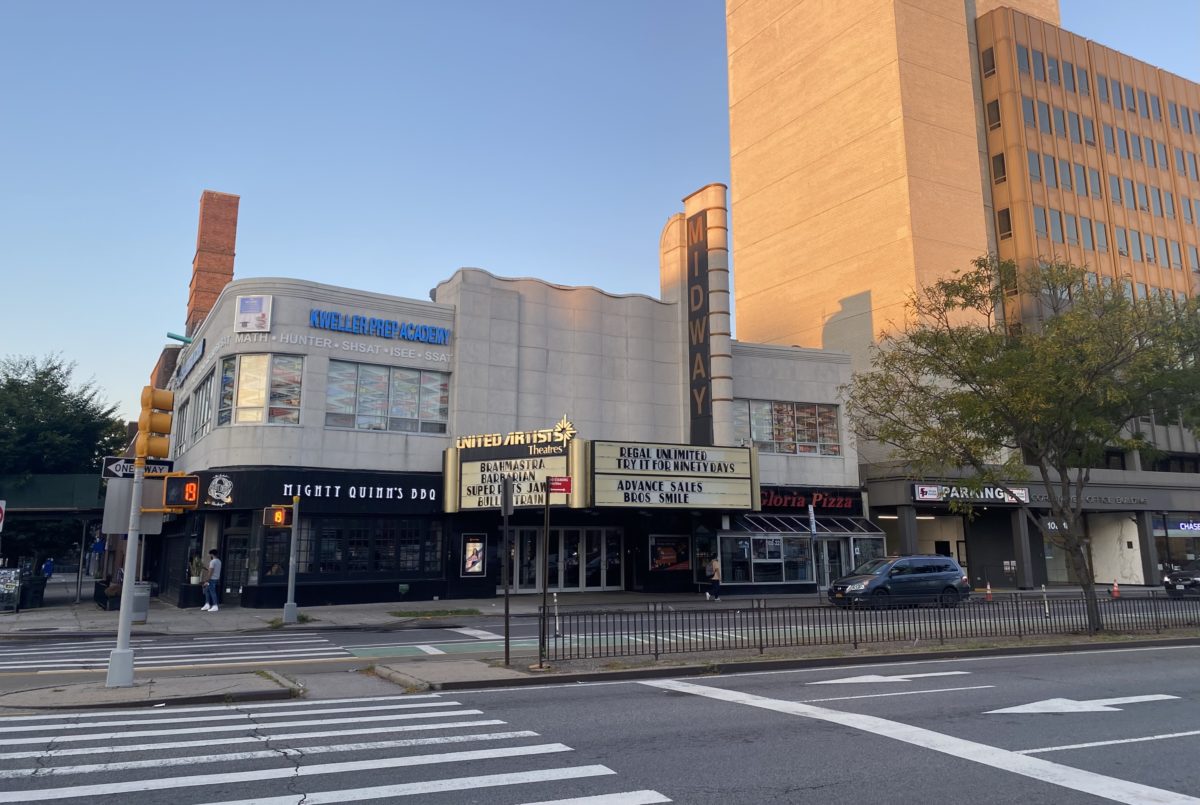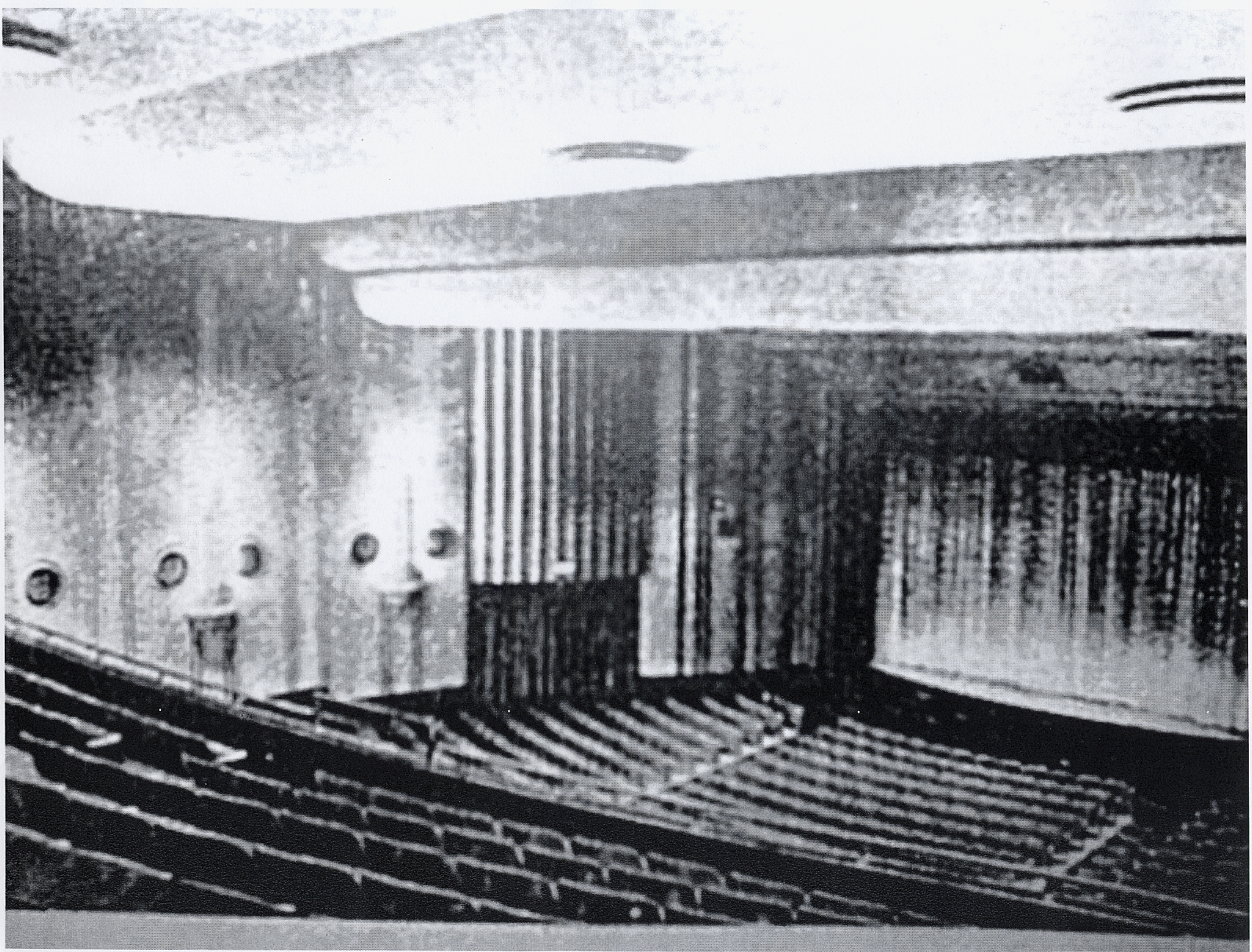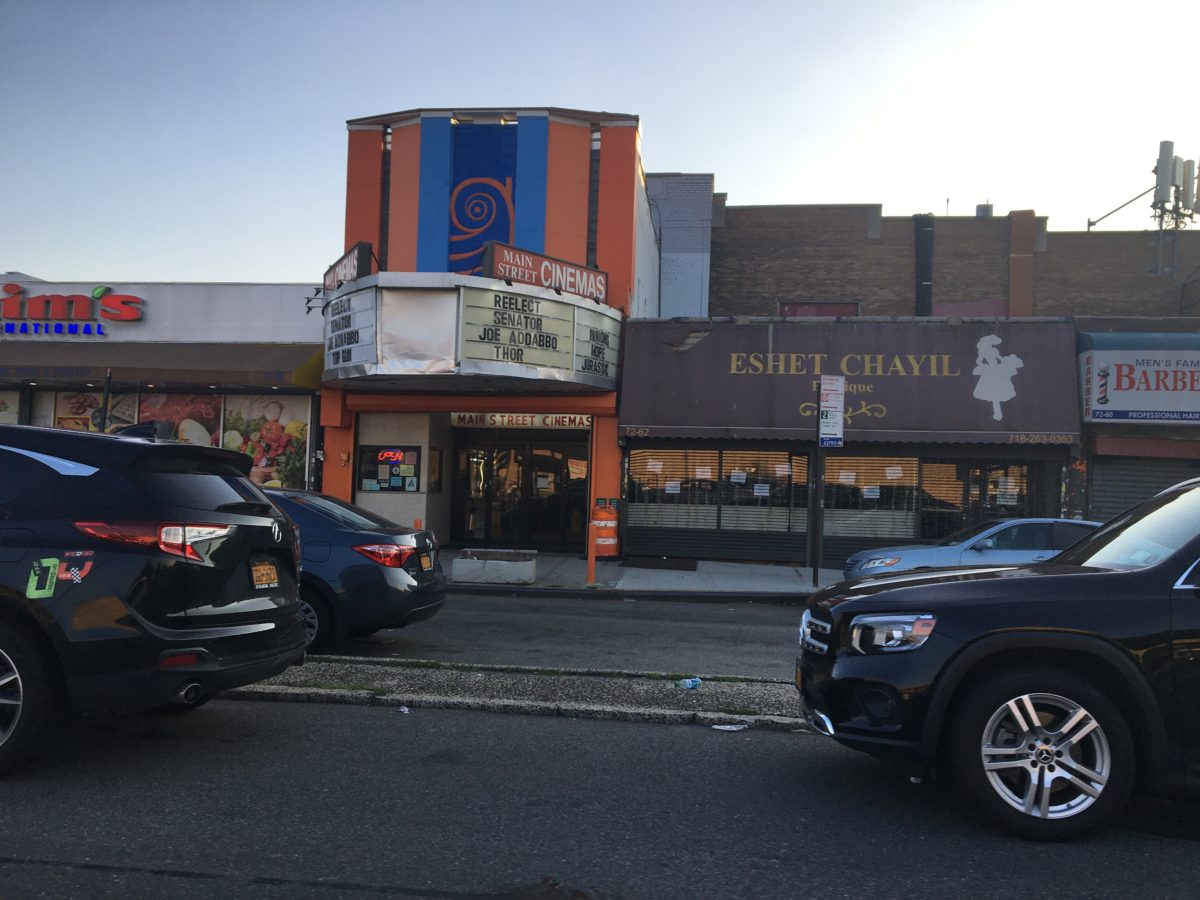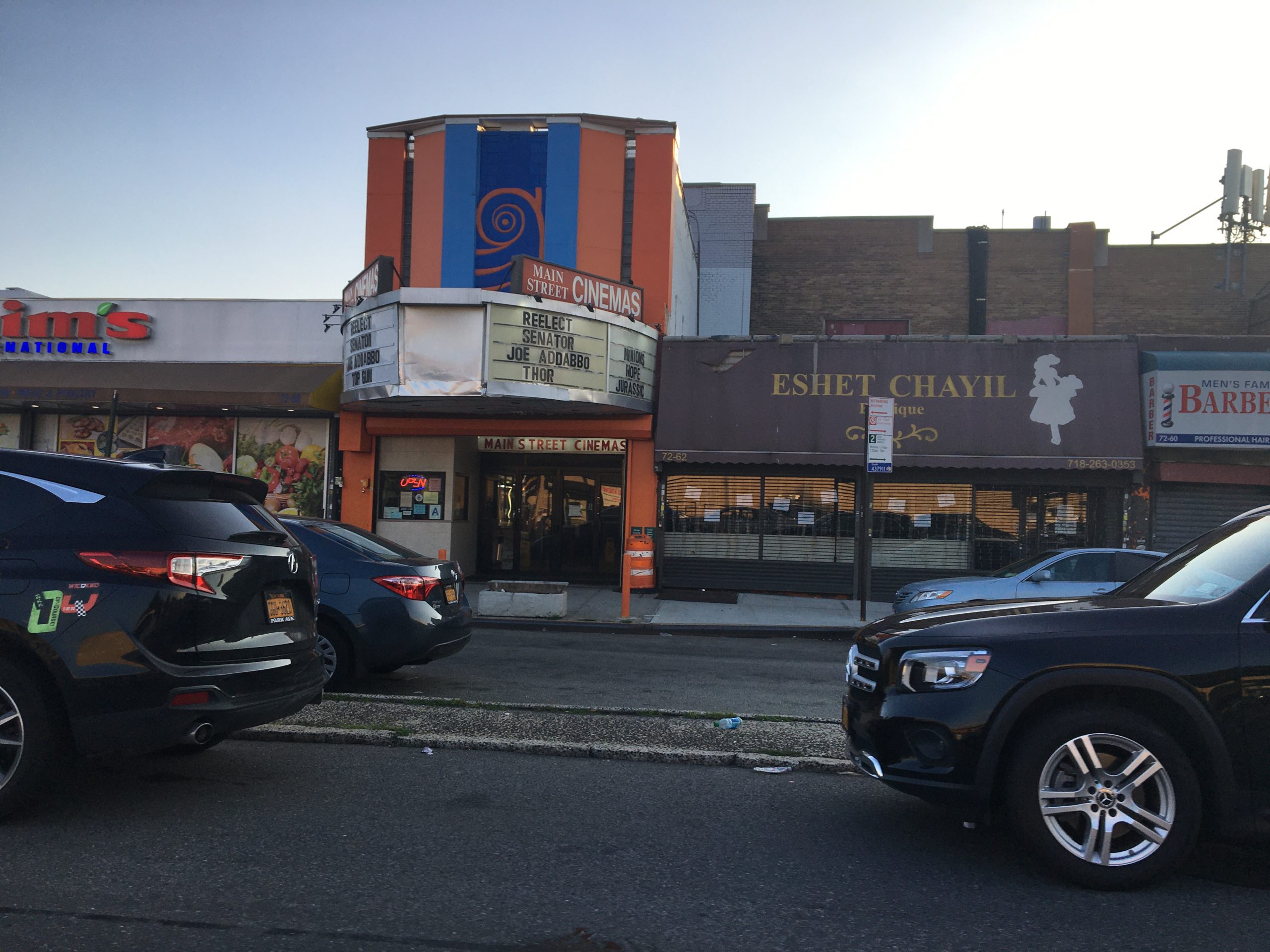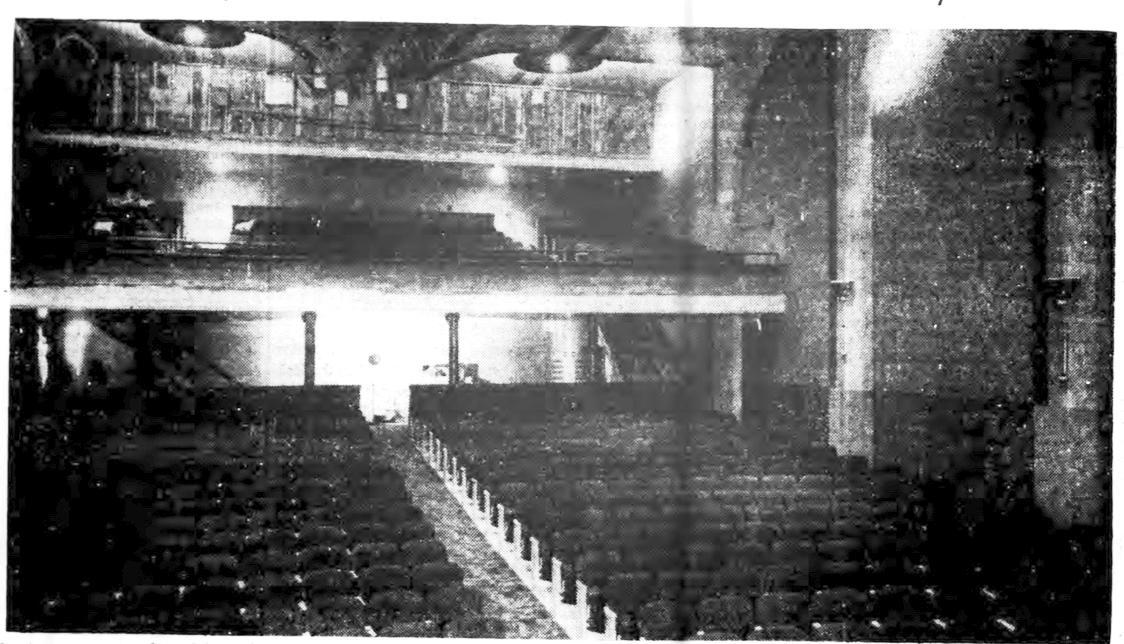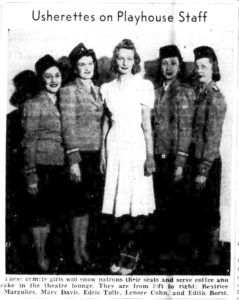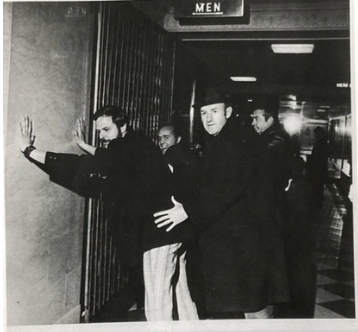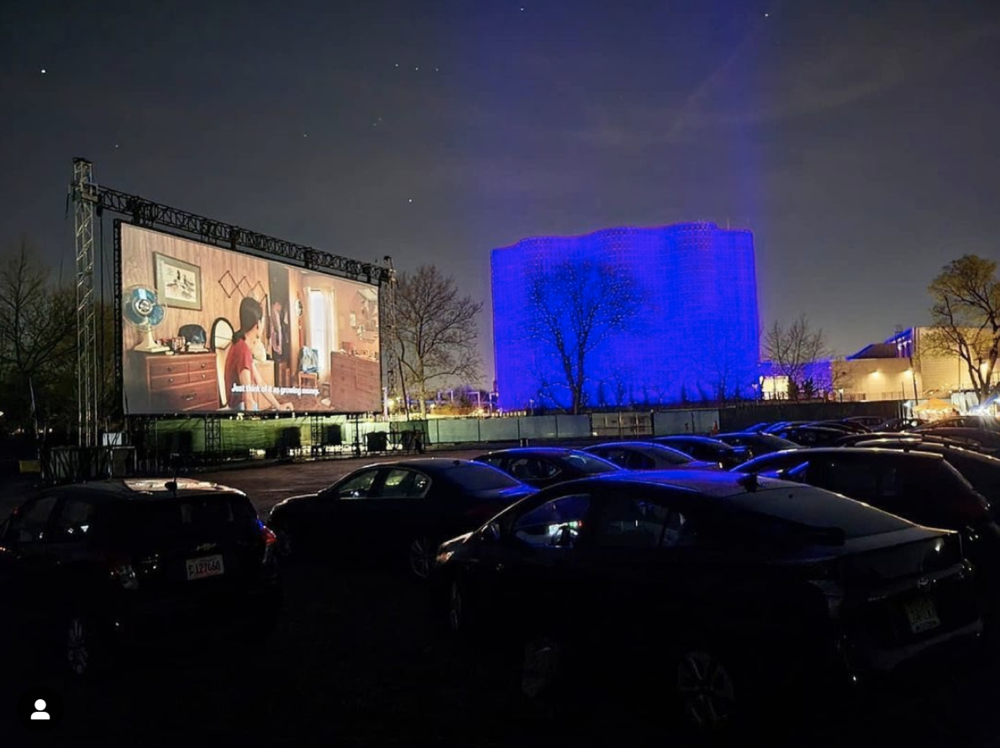Legendary Midway Theatre turns 80
A milestone at a Golden Age theater
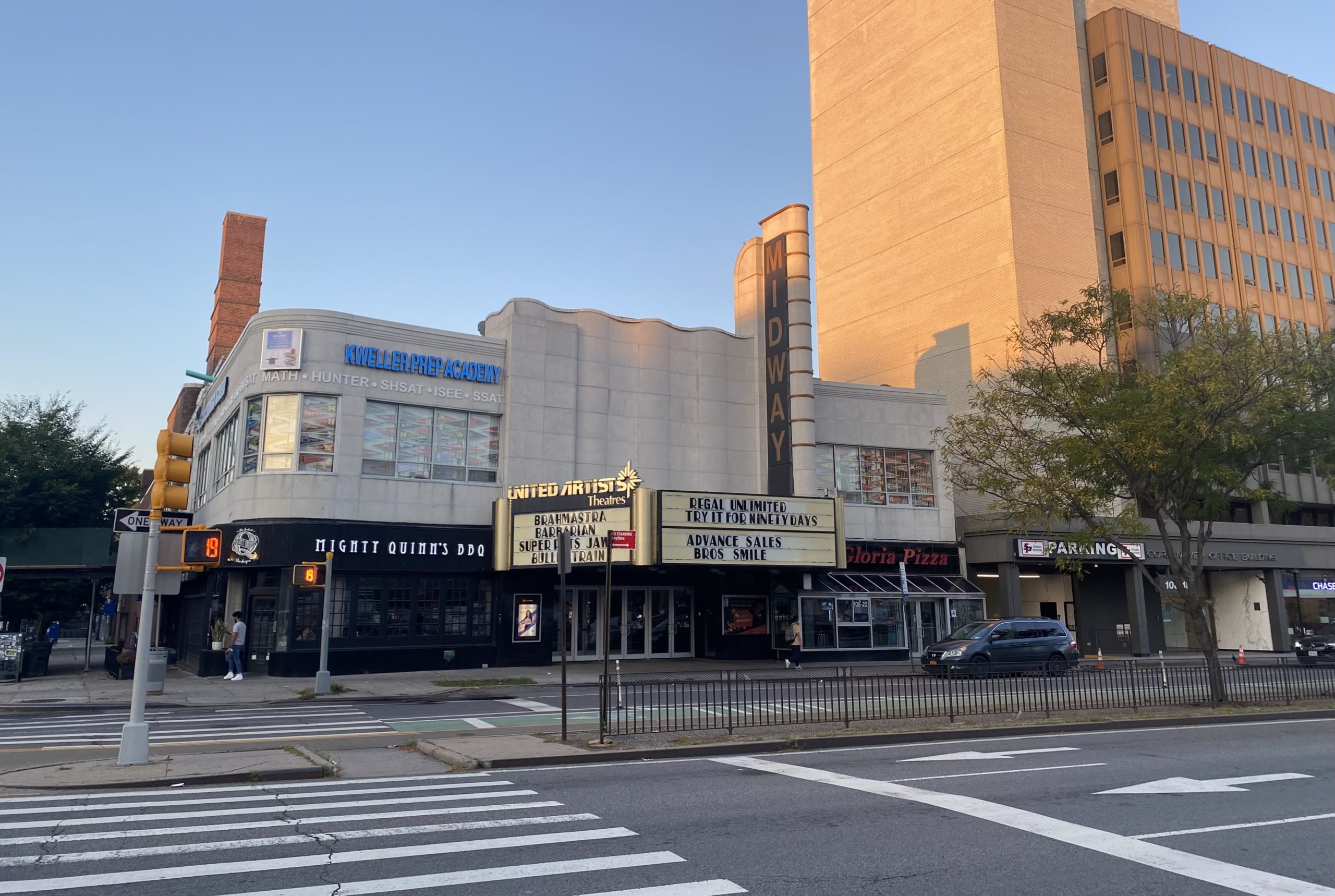
Midway Theatre, today
By Michael Perlman
mperlman@queensledger.com
It is not too often that patrons can take their children to the theater where their great-grandparents had their first date or saw a “who’s who” of actors in Classical Hollywood Cinema.
Those memories come alive at the historic Midway Theatre at 108-22 Queens Boulevard in Forest Hills, an Art Moderne community-recognized landmark.
Patrons can say “Happy 80th Birthday, Midway!” which debuted with a gala opening on Sept. 24, 1942, earning it the status of one of Queens’ longest continuously operating theaters.
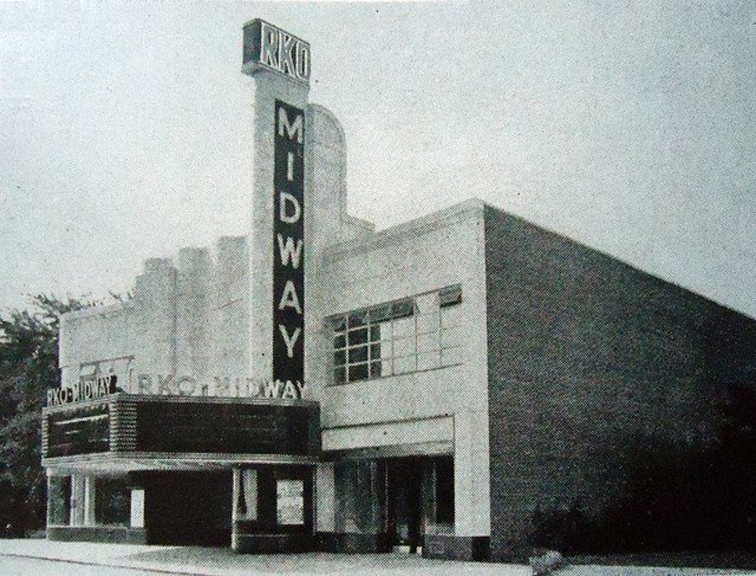
Midway Theatre upon completion in 1942.
The theater was named after achieving an American victory in the Pacific island outpost during WWII’s Battle of Midway.
Opening attractions were the U.S. Navy’s Technicolor short subject, “The Battle of Midway,” as well as “The Pied Piper” and “Just Off Broadway.”
A long-list of the theater’s other classic films include “Yankee Doodle Dandy,” “Casablanca,” “Pride of the Marines,” “Help!,” “West Side Story” and “Saturday Night Fever.”
Films further came to life with celebrity visits including Bob Hope and Lucille Ball, who conducted a meet and greet.
The “MIDWAY” vertical beacon and marquee offers a lighting spectacular along Queens Boulevard.
Also of distinction is a streamlined accordion-style and curved corner façade, and a whimsical circular lobby with a 30-foot ceiling with domes and a sweeping staircase leading to a picture window.
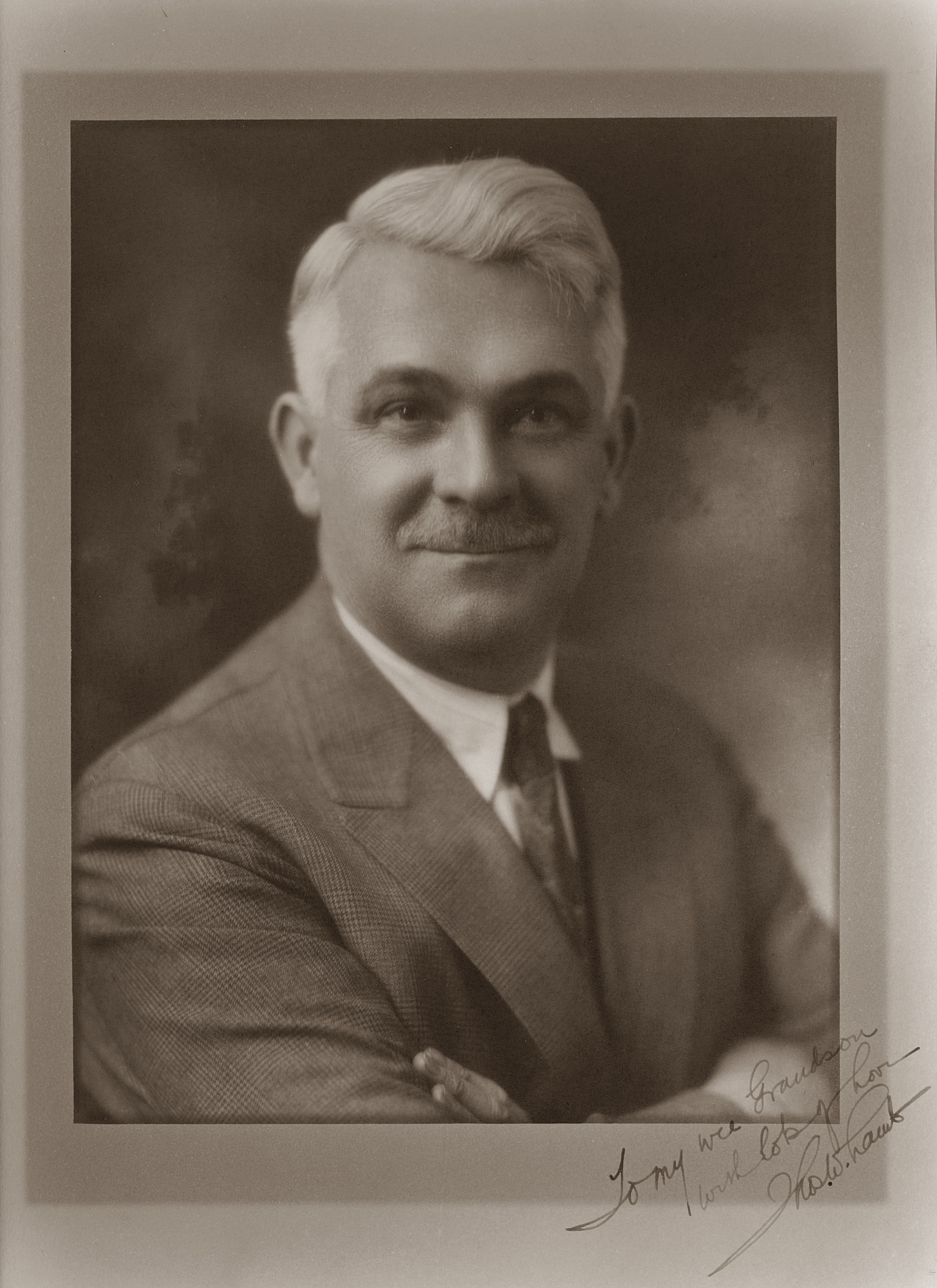
Architect Thomas White Lamb, Courtesy of great-grandson Tom Andrew Lamb.
The Midway was designed by America’s foremost theater architect, Scotland native Thomas White Lamb (1871 – 1942), along with consulting architect S. Charles Lee.
“Intimate Facts About Myself,” a whimsical cartoon-illustrated pamphlet introduced patrons to the theater in 1942. It read, “I am what you call modernistic – with all the newest wrinkles and latest gadgets. Here and now I want to give thanks to the late Thomas Lamb, one of the greatest theatrical architects. In me, his last theatre, you will find the best example of his genius.”
Offering insight to novelties, it read, “You, the patrons of the Midway will vote for the outstanding star each year. His or her picture will then be placed in especially designed panels in the Hall of Fame, which are located in each side of the auditorium.”
It continued, “A thing of beauty and a joy forever… that’s me all over!”… “Harold Rambusch, famous interior decorator surpassed himself designing my color scheme and it’s something ‘out of this world.’ You will admire my stepped ceiling, with the cleverly concealed indirect flood lights and those unusual lighting fixtures on the side walls.”
Today, Regal UA Cinemas’ Midway Theatre is a go-to destination for first-run films, but was also known for its Walt Disney cartoons and up-to-the-minute news.
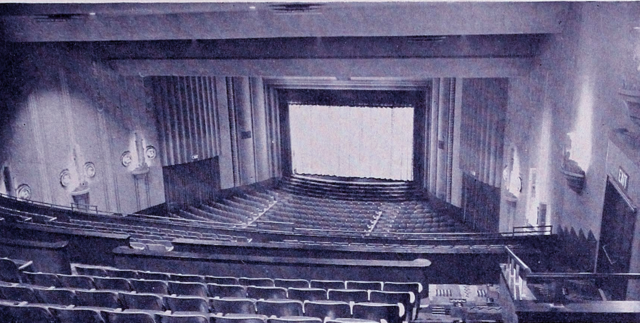
Midway Theatre grand opening, auditorium, 1942. Photo courtesy of Dallasmovietheaters under a Creative Commons license.
Historically, operations shifted from RKO to Skouras to United Artists. It also transitioned from a single screen to a quad to nine screens, and in more recent times, digital advances and recliners were introduced.
One of the earliest Forest Hills patrons, Richard Delaney, who now resides in Cary, N.C., said, “I was six when the Midway opened, and my mom told me what a major event it was. It was a formal affair, with klieg lights on Queens Boulevard. Some celebrities were present.”
The Midway was an attraction upon entering. He said, “The ticket booth had a curved front and on top of the glass in gold was a map of Midway Island and surrounding islands. There was a long passageway with four wooden railings: two for people entering to see a film and two for exiting. There was quite a line of people waiting. Those were the days of double features. After you had your ticket torn in half, you entered a beautiful Art Deco lobby with a curved staircase to the mezzanine. Either side of the candy and popcorn counter were entrances into the main auditorium.”
He recalled a series of circular lights in the auditorium. “They had black backgrounds, but in the center were figures of dancing ladies. A glow would come from the circle surrounding the figures.”
There were uniformed ushers and usherettes who would accompany guests to their seat with a flashlight, if the film was already on, according to Delaney.
Additionally, he can still sense the matron walking up and down the aisles, ensuring that everyone behaved.
If not, he recalled, “She would have you come out of your seat and you would be asked to leave.”
On Saturdays in the 1940s, beginning at 10 a.m., a children’s show often spanned four hours.
“They would have a double feature, 10 cartoons and sometimes 10 to 15-minute serials, with one to two chapters each week, leaving you hanging in suspense. Sometimes they would show ‘Dick Tracy,’ ‘Flash Gordon,’ ‘Roy Rogers’ and ‘Gene Autry.’ Some would go for 20 chapters.”
Delaney also saw many films during the heyday of the Hollywood Studios system.
With his mother, he would see Bette Davis, Joan Crawford and Ann Sheridan on the big screen.
Usually on a Friday night, there was a request for contributions to various charitable organizations, such as March of Dimes.
“The manager would make an announcement on the stage and ushers would pass canisters up each aisle for people to deposit a contribution,” he said. “They also sold war bonds or war saving stamps.”
Delaney is hopeful for a belated Midway extravaganza. “You can have a big 80th birthday cake in the lobby with a Saturday evening feature. It’s an iconic theater, so you can have a plane fly over Forest Hills with ‘Happy 80th Birthday Midway Theatre’ written in the sky.”
Local 306 projectionist Fred Hadley, formerly of Forest Hills, now lives in Boca Raton, Fla.
He reminisced, “I worked as a union projectionist in 1972 at the then-single screen Midway, which we salute on its 80th anniversary. I remember showing ‘Cabaret’ to full 2,000-seat houses. In those days, movies were projected using 20-minute reels of 35 mm film. The multiplex concept was just beginning.”
Forest Hills resident Patty Bugland believes that additional original art moderne features exist, such as above dropped ceilings in the auditoriums and the outer lobby.
“It was great to go with friends and wait for the lights to dim and the planetarium ceiling lights to twinkle. I always looked for Midway Island. This was the original ceiling of the whole theater when it was a single screen. It featured a map of the world and the constellations. This was as fascinating to me as the movies,” Bugland said.
She would attend every Disney animation and musical, including “South Pacific” and “West Side Story” and historical costume epics, such as “The Ten Commandments” and “How the West Was Won.”
Bugland continued, “Often, there was a double feature with that phrase, ‘Selected Short Subjects,’ which meant the forerunner of music videos or a very short comedy film, a short documentary or several cartoons. A video I remember most vividly was Ray Charles and The Raelettes performing ‘Hit the Road Jack.’”
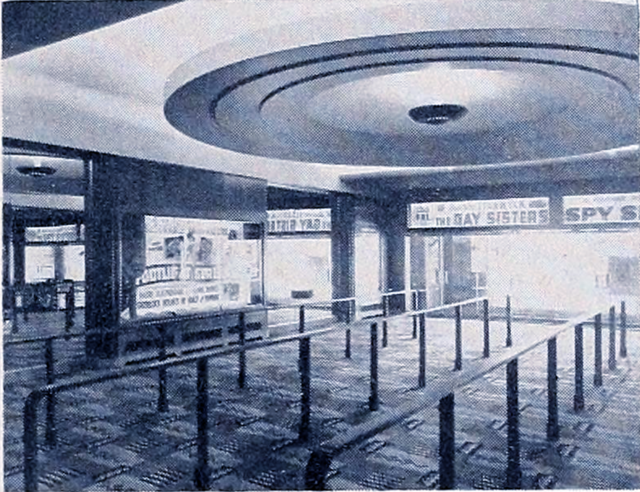
Midway Theatre lobby before approaching the grand lobby, 1942 Photo courtesy of Dallasmovietheaters under a Creative Commons license.
Another resident, David Gelman, said, “As with many of the classic buildings that are protected, I would be sad to see the Midway coming to end if it’s not preserved. It’s a quintessential part of Forest Hills.”
He recalls seeing classics such as “Goldfinger” and “Mary Poppins,” as well as waiting on a long line to see “Butch Cassidy and the Sundance Kid.”
Westchester resident Barry Werbin takes pride in how grand and huge the Midway is.
“In my days growing up in Forest Hills, there were no multiplex theaters locally. The Midway is an architectural gem worth landmarking. Just look at what happened to the Forest Hills Theatre where I have other memories. I feel thankful I got to come of age in such a special place,” he said.
“Preserving the beautiful art moderne architecture of the mid-20th century is important, since this is a period when New York City was still becoming a world-recognized center of art and culture, and the many periods that represent this evolution are disappearing in many neighborhoods,” said Forest Hills native Jackie Fishman.
She would like to see an 80th birthday celebration conceived as “a star-studded, old-fashioned, elegant event complete with showings of movies from 1942.”
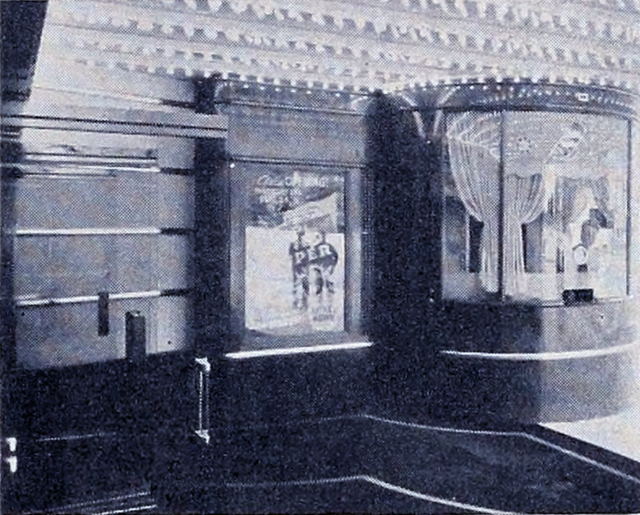
Original Art Deco ticket booth, 1942 grand opening Photo courtesy of Dallasmovietheaters under a Creative Commons license.
“It would be fun to turn this into a week-long event that is open to everyone, with the opening day and night as an invitational party, and the proceeds could benefit a local preservation effort,” she said.
“The Midway seemed like a mini Radio City Music Hall,” said Denise De Maria of Forest Hills.
As a child, she attended a spin-off of the popular “McHale’s Navy” sitcom.
“Several cast members came up on stage afterwards, shook hands and gave out autographed pictures. Co-star Tim Conway was there and I got a picture. I was thrilled to meet a friendly celebrity, who became so well-known for decades,” she said.
Virginia resident Alison Turnbull Schoew, who was raised in Sutton Hall in Forest Hills, remembers the matrons and ice cream bonbons in little white boxes, but her truly special memory is attending the children’s matinee of “Big Red” in 1962.
She said, “The movie was the story of a lovely Irish Setter and her hijinks. After the film, a kind dad brought his own Irish Setter to the Midway and all of us got to pet it. I was too young to know that I wasn’t patting the star of the movie, and I carefully protected my petting hand from the rain all the way home.”
Marla Duffy-Eng, who was raised in Forest Hills, recalls promotional giveaways, as in the case of a plastic seat belt for Alfred Hitchcock’s “The Birds.”
Additionally, she said, “I remember special signage for big movies like ‘What’s New Pussycat?’ and ‘My Fair Lady.’ For ‘Cleopatra,’ the studio created a special marquee with giant letters in red and black.”
Forest Hills resident Amanda Killian said, “The Midway was the go-to for the big openings.”
Fast-forwarding to summer 1996, she had several teen friends who were employed at the Midway.
“I was invited into the projector room watching my friends load the reels and then watching the movies from a different vantage point. I would help them clean the theaters after, so that the staff and their friends could have private showings with unlimited popcorn.” For a celebration, she said, “It would be nice to see time capsule style photos of the Midway. You would really be able to see the evolution of the neighborhood.”
Her husband, J.P. Killian said, “I remember back in 1989, when I was excited to see ‘Batman’ with Michael Keaton, and so was the rest of my fifth-grade class. As years have gone by, I’ve seen countless blockbusters from ‘Training Day,’ ‘Fast and Furious’ movies and ‘Die Hard.’”
He also embraces preservation.
“I love the fact that the Midway is still around and people are still watching blockbuster hits on the big screen. For a celebration, it would be great if the Midway had an eighty-cent movie deal for a day,” he said.
“It is a shame other theaters in the area have not fared well, but I hope as the Midway turns 80, we as a community can keep it alive.”



